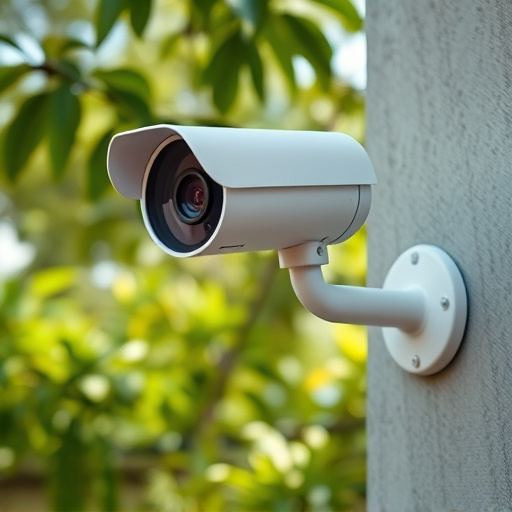Retail security cameras, including dummy or mock cameras, serve as powerful deterrents for criminal activity and play a crucial role in store surveillance. While they don't capture footage or provide real-time monitoring, their visible presence can significantly reduce shoplifting and illicit behavior. However, the effectiveness of dummy cameras is debated, with mixed results regarding theft rate impacts and potential privacy concerns requiring careful consideration during implementation.
Mock security cameras, or dummy cameras, are transforming retail store security. In this article, we explore their evolving role in crime prevention and shopper behavior. From understanding the significance of security cameras in retail environments to delving into design and placement strategies, we analyze how these devices impact crime rates. Additionally, we discuss legal considerations and ethical implications, offering a balanced perspective on whether dummy security cameras truly deter crime.
- Understanding the Role of Security Cameras in Retail Environments
- Exploring Dummy Cameras: Design and Placement Strategies
- The Impact on Crime Prevention and Shopper Behavior
- Legal Considerations and Ethical Implications: A Balanced Approach
Understanding the Role of Security Cameras in Retail Environments
In retail stores, security cameras play a multifaceted role. They serve as more than just deterrents to potential thieves; they act as surveillance tools to monitor store activity, track customer behavior, and enhance overall security. By placing cameras at strategic locations, retailers can create an environment that encourages honest behavior and discourages criminal activities. The presence of these devices can significantly impact the store’s safety and efficiency, allowing staff to focus on providing excellent customer service rather than constantly worrying about security breaches.
The effectiveness of dummy or mock security cameras in deterring crime is a topic of interest. While they do not capture actual footage or provide real-time monitoring, their mere presence can be a powerful psychological tool. Criminals often consider the risk of getting caught and the potential consequences when deciding whether to commit an offense. Dummy cameras suggest that the store is taking security seriously, making it less appealing for would-be thieves. This perception alone can contribute to a safer shopping environment, even if the cameras do not actively deter crimes directly.
Exploring Dummy Cameras: Design and Placement Strategies
Dummy security cameras, also known as mock or decoy cameras, are an effective way to enhance retail store security and deter potential thieves. These camera systems are carefully designed to look realistic, often mimicking the appearance of genuine surveillance equipment. From a design perspective, they should be placed in strategic locations that offer optimal visibility while maintaining an aesthetic that blends seamlessly with the store’s environment.
When considering placement strategies, it’s crucial to think like a thief. Positioning dummy cameras in areas where merchandise is easily accessible or known hotspots for shoplifting can send a powerful message to would-be criminals. These cameras can be mounted on ceilings, walls, or even as freestanding devices, creating the illusion of constant surveillance. Effective placement not only discourages criminal activity but also provides store owners with valuable peace of mind.
The Impact on Crime Prevention and Shopper Behavior
Dummy security cameras, while not providing actual surveillance capabilities, have a significant impact on crime prevention and shopper behavior. Their mere presence can deter potential criminals due to the psychological effect of being watched. This perception of increased security can significantly reduce shoplifting incidents and other forms of criminal activity within retail stores.
The influence extends beyond physical security; dummy cameras also alter consumer behavior. Shoppers may feel more at ease knowing that there is a visual deterrent in place, encouraging honest transactions. This sense of safety can enhance the overall shopping experience, leading to increased customer satisfaction and potentially higher sales.
Legal Considerations and Ethical Implications: A Balanced Approach
While dummy security cameras may seem like a cost-effective and convenient solution for retail stores looking to enhance their security, it’s crucial to consider the legal and ethical implications before implementing them. The use of visual surveillance is governed by various laws and regulations that vary depending on the jurisdiction. Retailers must ensure they comply with privacy laws, such as obtaining consent for recording and storing footage, especially when placing cameras in areas where customers have reasonable expectations of privacy, like try-on rooms or changing areas.
The effectiveness of dummy cameras in deterring crime is debatable. While some studies suggest they can reduce theft by creating a perception of increased surveillance, others argue that their presence may simply shift criminal activity to unmonitored areas. Moreover, the ethical implications extend beyond legal boundaries. Using realistic-looking dummy cameras could lead to false alarms or unnecessary stress for both customers and staff. A balanced approach involves understanding the limitations and potential consequences, alongside the benefits, to ensure a responsible and ethical use of security measures.
Dummy security cameras, or mock surveillance equipment, can significantly enhance retail store security without the need for extensive physical barriers. Their strategic placement sends a powerful message to potential criminals, effectively deterring crime in retail environments. While their impact on reducing shoplifting and enhancing overall safety is notable, it’s essential to balance these benefits with legal considerations and ethical implications. When used judiciously, these dummy cameras can transform retail spaces into safer, more secure environments while respecting privacy rights. Ultimately, understanding the role of visual deterrents in crime prevention allows retailers to make informed decisions, ensuring both a secure shopping experience for customers and compliance with legal frameworks.
